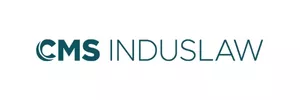- within Privacy topic(s)
- in United States
- with readers working within the Technology and Retail & Leisure industries
- within Privacy topic(s)
- with Finance and Tax Executives and Inhouse Counsel
- with readers working within the Banking & Credit and Law Firm industries
1. INTRODUCTION
As India advances toward operationalising its Digital Personal Data Protection Act, 2023 ("DPDPA"), the Ministry of Electronics and Information Technology ("MeitY") has released a Business Requirements Document ("BRD") for Consent Management Systems ("CMS").1 This technical guidance document, while non-binding, provides critical insights into the development and deployment of consent management infrastructure that data fiduciaries and consent managers must consider in their compliance planning, while empowering data principals to have control over their data and exercise their rights.2
2. REGULATORY CONTEXT AND CURRENT STATUS: THE DPDPA IMPLEMENTATION TIMELINE
The DPDPA, which received presidential assent on August 11, 2023, establishes a comprehensive data protection regime for India. However, the DPDPA remains dormant pending notification by the Central Government. This regulatory transition period has been marked by several key developments:
- January 2025: MeitY released the Draft Digital Personal Data Protection Rules, 2025 for public consultation
- March 2025: Public consultation period concluded
- June 2025: Publication of the CMS BRD
3. LEGAL FRAMEWORK FOR CONSENT
Section 6 of the DPDPA establishes stringent requirements for valid consent, mandating that it must be:
- Free: Given without coercion or undue influence
- Specific: Related to clearly defined purposes
- Informed: Based on adequate notice and understanding
- Unconditional: Not bundled with other consents
- Unambiguous: Clear and explicit in its expression
- Affirmative: Requiring positive action by the data principal
The BRD translates these legal requirements into technical specifications, providing a blueprint for compliant consent management infrastructure.
4. CORE COMPONENTS OF THE CONSENT MANAGEMENT FRAMEWORK
4.1. Consent Lifecycle Management
The BRD conceptualises consent as a dynamic process requiring comprehensive lifecycle management across five distinct phases:
- Consent Collection
The initial phase emphasises user-friendly and purpose-specific consent requests triggered only when data principals initiate services requiring personal data processing. Key requirements include (i) granular consent mechanisms preventing bundled approvals; (ii) accessible notice provision clearly articulating collection purposes, data categories, data principal rights, retention and withdrawal policies; (iii) multi-language support accommodating India's linguistic diversity; and (iv) immutable consent artifacts capturing comprehensive metadata including user ID, timestamp, purpose identifiers, and consent status and validity, that are tamper-proof.
- Consent Validation
Before any data processing activity, the system must verify active, lawful, purpose-matched consent through real-time API validation. The validation process encompasses (i) purpose alignment verification ensuring processing activities remain within consented scope; (ii) temporal validity checks confirming consent remains active and unexpired; and (iii) comprehensive audit logging maintaining immutable records of all validation requests and outcomes.
- Consent Update and Renewal
The framework provides mechanisms for consent modification and renewal, ensuring data principals retain control over their permissions. Critical features include (i) proactive notification systems alerting users to scope changes (including introductions of new processing purposes or modification of existing ones) or consents expired/approaching expirations; (ii) impact on data processing along with the need for fresh consent; (iii) granular modification capabilities allowing purpose-specific updates in a simple manner, without affecting other consents; and (iv) real-time synchronisation across all integrated systems and third-party processors
- Consent Withdrawal
The BRD emphasises that withdrawal must be as simple as the original consent-granting process, incorporating: (i) purpose-specific withdrawal requests; (ii) immediate processing cessation upon withdrawal confirmation; (iii) prompt user notification and comprehensive stakeholder notification to all relevant data fiduciaries and processors; and (iv) exception handling for legally mandated processing requirements.
4.2. Cookie Consent Management
Recognising the prevalence of web and application-based data collection, the BRD provides specific guidance for cookie consent management, including: (i) granular category controls for essential, performance, analytics, and marketing cookies; (ii) cookie policy display and default privacy settings enabling only essential cookies until explicit consent is obtained; (iii) policy change notifications requiring renewed consent for modified cookie policies; and (iv) accessible preference management through dedicated user interfaces.
4.3. User Dashboard and Rights Management
The BRD mandates comprehensive user dashboards providing data principals with:
- Consent History Access
- Chronological consent logs displaying all consent-related actions;
- Searchable interfaces with filtering capabilities by date, purpose, or status; and
- Data portability features enabling the secure export of consent histories.
- Real-time Consent Management
- Active consent modification with immediate effect across all systems;
- Status confirmation mechanisms providing users with processing updates; and
- Transparent change disclosure notifying the consent changes.
- Transparent change disclosure notifying the consent
changes.
- Guided complaint submission for consent violations or data misuse;
- Automated case management with unique reference numbers and status tracking; and
- Escalation mechanisms ensuring timely resolution and DPO involvement where necessary.
4.4 Technical Architecture and Standards
- System Design Principles
The BRD advocates for a modular, standards-based architecture incorporating: (i) privacy-by-design implementation with built-in data protection measures; (ii) interoperability standards enabling seamless integration across platforms; (iii) scalability considerations accommodating varying organisational sizes and processing volumes; and (iv) WCAG compliance ensuring accessibility for users with disabilities.
- Security and Compliance Framework
Critical security requirements include: (i) Role-Based Access Control (RBAC) with hierarchical permission structures; (ii) Multi-Factor Authentication (MFA) and Single Sign On (SSO) for administrative functions; (iii) Cryptographic protection for consent artifacts and audit logs; and (iv) Immutable logging with tamper-evident audit trails.
- API Standards and Integration
The framework emphasises secure API design for consent validation and management, incorporating: (i) real-time validation endpoints for immediate consent verification; (ii) automated notification systems for consent status changes; and (iii) comprehensive error handling with clear response codes and documentation.
4.5. Administrative and Governance Framework
- Data Retention Policy Management
The BRD requires sophisticated data retention capabilities, including: (i) automated retention schedules based on data categories and legal requirements; (ii) cryptographic deletion protocols ensuring secure data purging; (iii) legal exemption handling for mandated data retention scenarios; and (iv) comprehensive deletion auditing with immutable logs of all purging activities.
- User Role Management
Administrative functions must incorporate: (i) custom role definition tailored to organisational structures; (ii) dynamic permission management with real-time access control modifications; (iii) comprehensive audit trails for all administrative actions; (iv) separation of duties ensuring appropriate checks and balances.
5. COMPLIANCE IMPLICATIONS AND STRATEGIC CONSIDERATIONS
The BRD represents an interim guidance document that adopts a process-based approach and will likely evolve as the DPDPA implementation progresses. Key areas for monitoring by businesses include: (i) Final rule publication and any modifications to consent management requirements; (ii) Enforcement timeline announcements and transitional compliance expectations; (iii) Sectoral guidance for specific industries with unique consent management challenges. Organisations / Data Fiduciaries subject to the DPDPA should adopt a proactive approach to CMS implementation by considering:
- Current consent practice evaluation against BRD specifications
- System architecture assessment for CMS integration capabilities
- Data mapping exercises to identify consent-dependent processing activities
- Vendor assessment for CMS solution providers and compliance capabilities
- Internal capabilities for consent management and compliance monitoring
- Regional implications for multinational organisations with Indian operations
- Cross-functional teams combining legal, technical, and business expertise
- Privacy impact assessments for consent management system deployment
- Comprehensive training programmes for staff involved in consent management
- Incident response procedures for consent-related breaches or violations
6. CONCLUSION
The API-first approach mandated by the BRD aligns with India's broader digital infrastructure philosophy, potentially enabling consent management integration with existing government platforms like DigiLocker and Aadhaar authentication systems. Upcoming consent management integrations by stakeholders will become especially relevant now considering MeitY's recent scrutiny of identity verification startups in India for potentially using unauthorised methods to access sensitive databases like Aadhaar, PAN, and GST.
It is also noteworthy to examine the relationship between the construct of “consent managers” under the DPDPA and the CMS proposed by this BRD, since consent managers are registered entities that also act as a single point of contact for data principals to manage their consent for the processing of their personal data. The consent manager framework is unique to India's privacy law ecosystem, in that it introduces a centralised, regulated model unlike the European Union's General Data Protection Regulation and California Consumer Privacy Act.
As India continues to operationalise its data protection regime, stakeholders await further light and direction on the operationalisation of the “consent manager” framework under the DPDPA, and whether the CMS is expected to be adopted by consent managers who accredit themselves with the Data Protection Board of India, or if in fact the CMS framework will run parallelly to the consent manager framework under the DPDPA. It is evident that the BRD serves as both a technical specification and a catalyst for market evolution as the document's comprehensive framework reflects not only regulatory requirements but also industry best practices emerging from India's rapidly maturing digital economy.
Most banks in India have already begun implementing sophisticated consent management systems, particularly in response to Account Aggregator framework requirements. The BRD's emphasis on granular consent aligns with existing practices in UPI and digital lending, where purpose-specific permissions are already operational. However, the requirement for multilingual consent notices will necessitate significant infrastructure investments for regional banking operations.
Large e-commerce and fintech platforms will face complex implementation challenges given their diverse service portfolios offering food delivery, payments, and shopping - the BRD's requirement for unbundled consent mechanisms will fundamentally alter user onboarding flows that currently seek comprehensive permissions upfront. Organisations adopting modular consent architectures early may find improved user trust and engagement, though this remains to be validated through implementation experience.
The healthcare and telemedicine sectors present unique challenges, with platforms managing sensitive health data across multiple stakeholders. The BRD's emphasis on consent withdrawal mechanisms must be balanced against medical record retention requirements, creating implementation complexities that require careful legal-technical coordination.
The CMS implementation mandate is creating substantial business opportunities within India's technology services sector. Leading systems integrators are likely to be developing specialised consent management offerings, while startups who are in the business of creating niche solutions for specific industry verticals may find themselves creating products aligned with the BRD's CMS.
Organisations that view the BRD as a foundation for building customer trust and operational excellence, rather than merely a compliance checklist, will be best positioned to thrive in India's data-driven economy. The convergence of regulatory requirements with business innovation opportunities makes consent management a strategic imperative that extends far beyond legal compliance.
Footnotes
1. https://d38ibwa0xdgwxx.cloudfront.net/whatsnew-docs/8d5409f5-d26c-4697-b10e-5f6fb2d583ef.pdf
2. The BRD emerges from MeitY's "Code for Consent" Innovation Challenge, designed to guide technology developers in creating DPDPA-compliant consent management solution.
The content of this article is intended to provide a general guide to the subject matter. Specialist advice should be sought about your specific circumstances.



